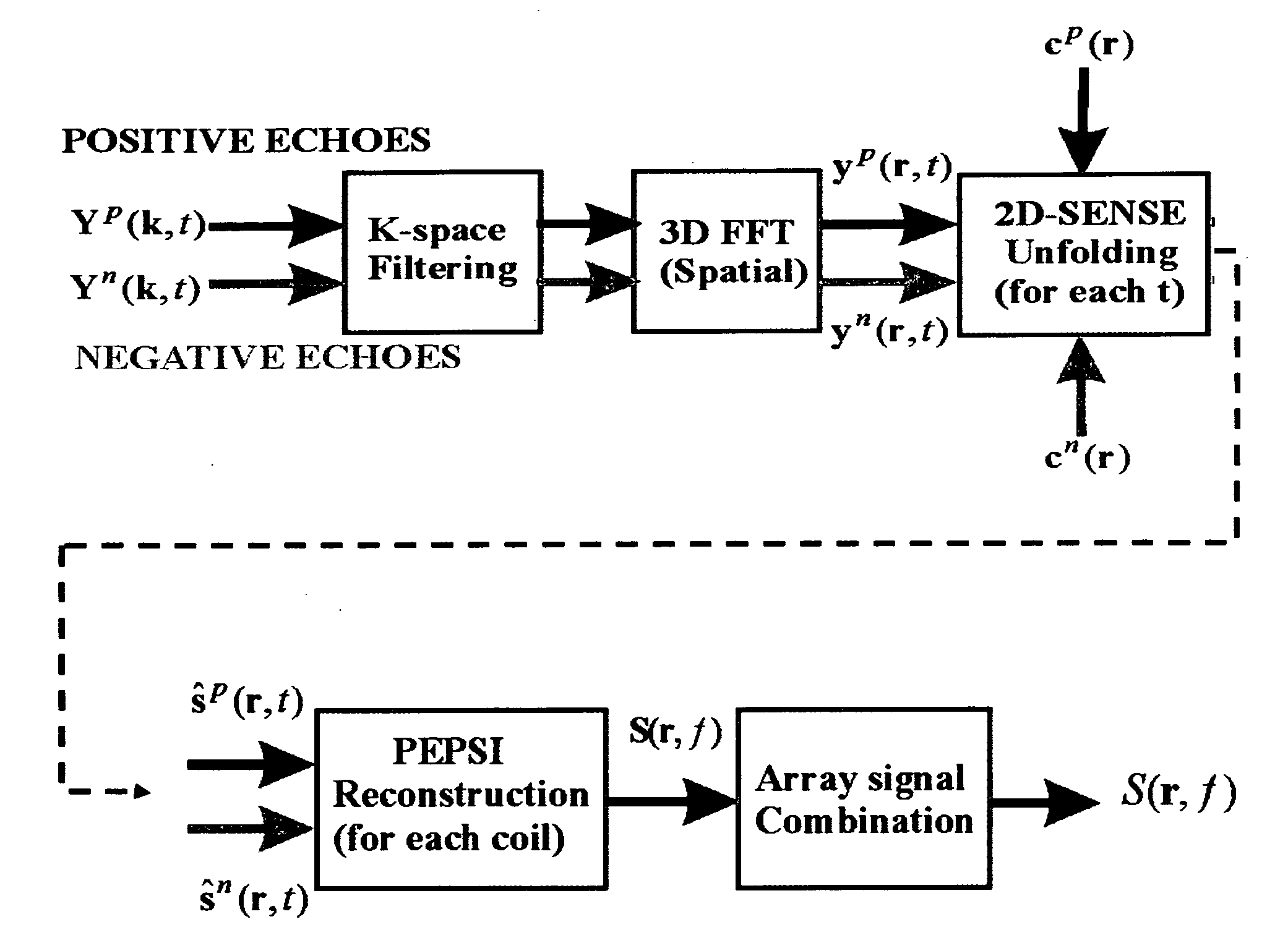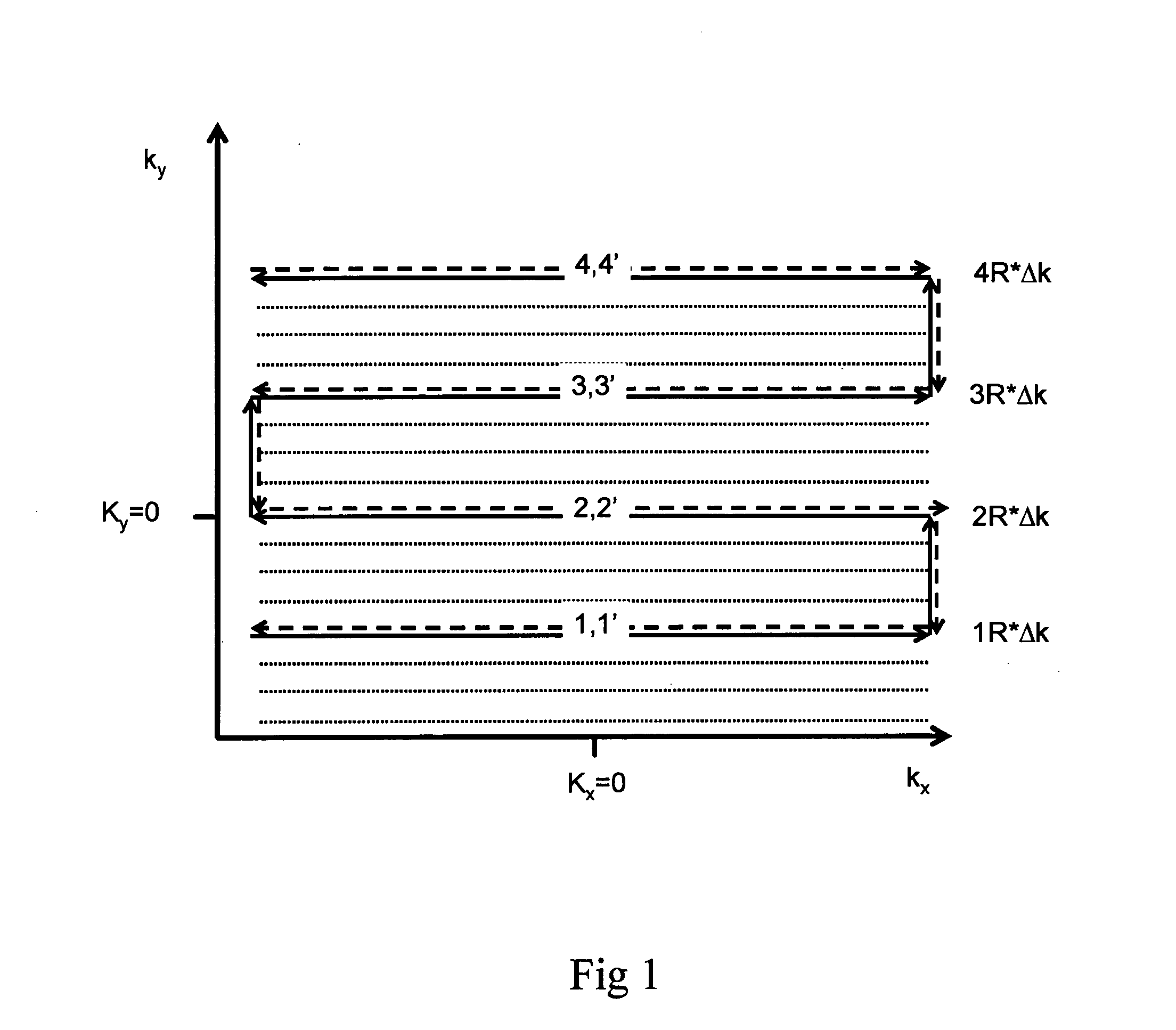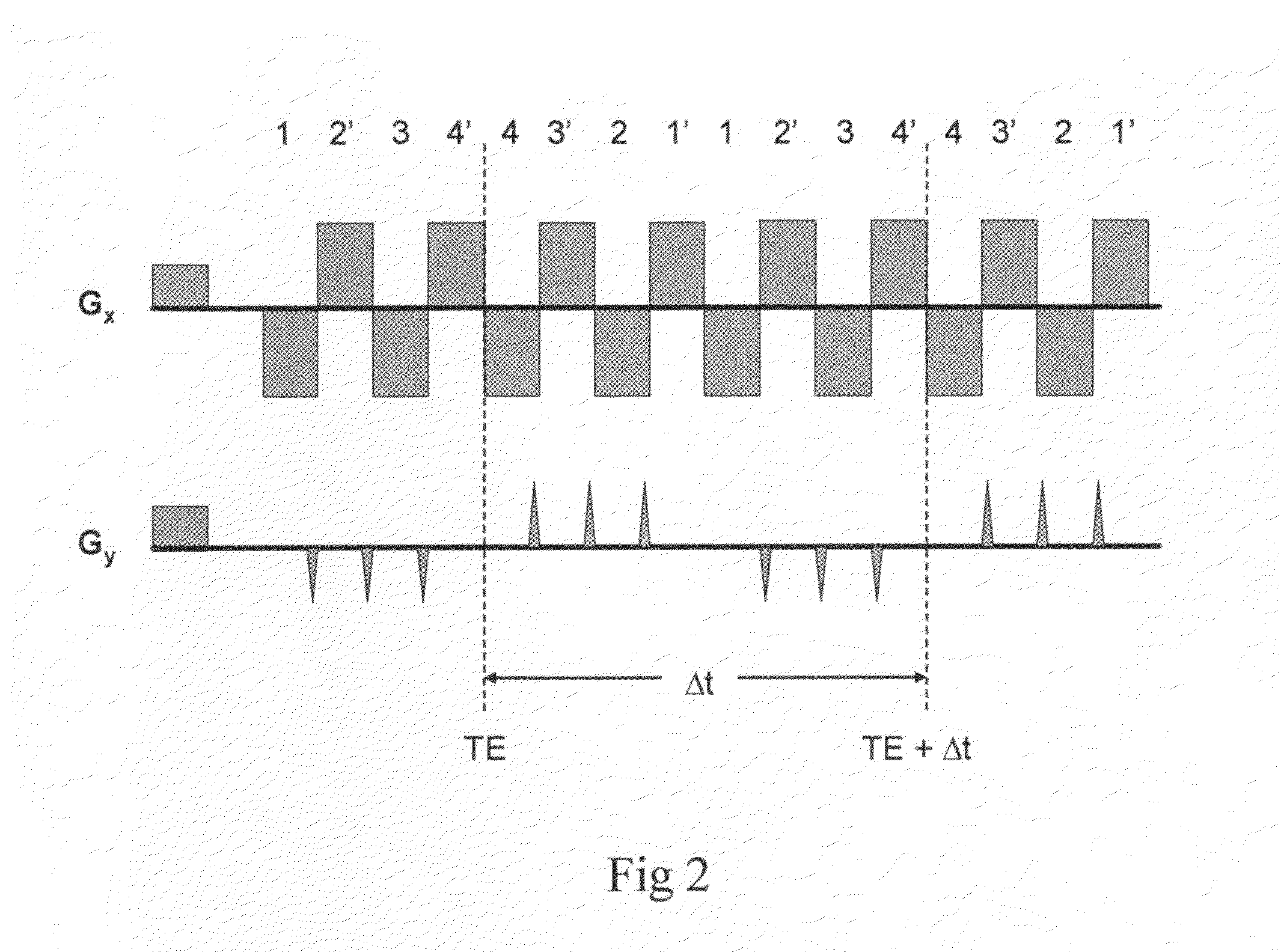Single-shot magnetic resonance spectroscopic imaging with partial parallel imaging
- Summary
- Abstract
- Description
- Claims
- Application Information
AI Technical Summary
Benefits of technology
Problems solved by technology
Method used
Image
Examples
Embodiment Construction
[0085]Theory
[0086]The single-shot MRSI method utilizes a train of alternating echo-planar readout gradients to simultaneously encode one spatial dimension and the spectral dimension. Spatial-spectral encoding in a second dimension is performed by interleaving a series of phase encoding gradient blips into the alternating readout gradient train between pairs of positive and negative readout gradient pulses to form a series of 2-dimensional spatial encoding modules with duration Δt (FIG. 1). Repetition of this spatial encoding module encodes spectral information with reconstructed spectral width 1 / Δt. The number of repetitions determines the spectral resolution. The second spatial dimension is undersampled and a phased array radiofrequency receive coil that generates a sufficient number of spatially distinct sensitivity patterns is required to enable acceleration with parallel imaging. This combination of partial interleaved phase encoding and partial parallel imaging provides conside...
PUM
 Login to View More
Login to View More Abstract
Description
Claims
Application Information
 Login to View More
Login to View More - R&D
- Intellectual Property
- Life Sciences
- Materials
- Tech Scout
- Unparalleled Data Quality
- Higher Quality Content
- 60% Fewer Hallucinations
Browse by: Latest US Patents, China's latest patents, Technical Efficacy Thesaurus, Application Domain, Technology Topic, Popular Technical Reports.
© 2025 PatSnap. All rights reserved.Legal|Privacy policy|Modern Slavery Act Transparency Statement|Sitemap|About US| Contact US: help@patsnap.com



